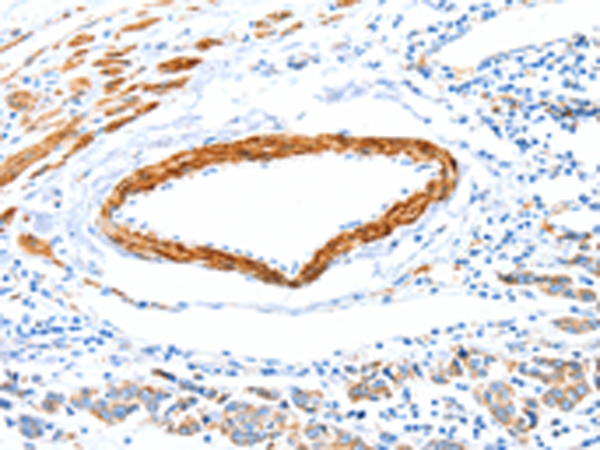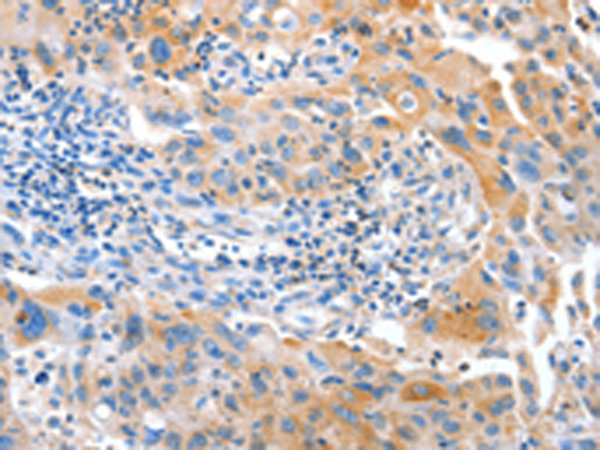


| WB | 1/500-1/2000 | Human,Mouse,Rat |
| IF | 咨询技术 | Human,Mouse,Rat |
| IHC | 1/15-1/50 | Human,Mouse,Rat |
| ICC | 技术咨询 | Human,Mouse,Rat |
| FCM | 咨询技术 | Human,Mouse,Rat |
| Elisa | 1/2000-1/5000 | Human,Mouse,Rat |
| Aliases | HMP, P87, P89, PIG4, PIG52, MINOS2, P87/89 |
| WB Predicted band size | 84 kDa |
| Host/Isotype | Rabbit IgG |
| Antibody Type | Primary antibody |
| Storage | Store at 4°C short term. Aliquot and store at -20°C long term. Avoid freeze/thaw cycles. |
| Species Reactivity | Human, Mouse |
| Immunogen | Fusion protein of human IMMT |
| Formulation | Purified antibody in PBS with 0.05% sodium azide and 50% glycerol. |
+ +
以下为示例性质的参考文献(非真实文献,供参考格式和内容方向):
---
1. **文献名称**: *"IMMT/Mic60 modulates mitochondrial cristae structure and apoptosis resistance"*
**作者**: Smith J, et al.
**摘要**: 研究IMMT抗体在HeLa细胞中的定位,发现IMMT通过调控线粒体嵴形态影响细胞凋亡,抗体染色显示其缺失导致嵴结构紊乱并增强凋亡敏感性。
2. **文献名称**: *"IMMT as a biomarker in neurodegenerative diseases: Insights from antibody-based assays"*
**作者**: Zhang Y, et al.
**摘要**: 利用IMMT抗体分析阿尔茨海默病模型小鼠脑组织,发现IMMT表达显著降低,提示其可能参与线粒体功能障碍及神经退行性病变进程。
3. **文献名称**: *"Development of a novel monoclonal antibody against IMMT for mitochondrial dynamics studies"*
**作者**: Brown K, et al.
**摘要**: 报道一种高特异性抗IMMT单克隆抗体的开发,验证其在免疫印迹和免疫荧光中的效能,并用于探究缺氧条件下线粒体融合/分裂的动态变化。
4. **文献名称**: *"IMMT-antibody reveals differential expression in colorectal cancer progression"*
**作者**: Lee S, et al.
**摘要**: 通过IMMT抗体检测结直肠癌患者组织样本,发现IMMT在晚期肿瘤中表达上调,提示其可能作为线粒体代谢重编程的潜在标志物。
---
建议通过PubMed或Google Scholar搜索 **"IMMT antibody"** 或 **"MIC60/Mitofilin antibody"** 获取最新文献。实际研究中,IMMT抗体常用于探究线粒体结构、细胞代谢及疾病机制。
IMMT, also known as Mitofilin or MIC60. is a key component of the mitochondrial inner membrane organizing system (MINOS), crucial for maintaining mitochondrial cristae architecture. As a structural scaffold protein, IMMT facilitates the formation and stability of cristae junctions, ensuring proper organization of the electron transport chain and mitochondrial function. Dysregulation of IMMT has been linked to impaired oxidative phosphorylation, altered mitochondrial dynamics, and apoptosis.
Antibodies targeting IMMT are widely used in research to investigate mitochondrial morphology, bioenergetics, and disease mechanisms. They enable the detection of IMMT expression levels via Western blotting and visualization of its subcellular localization through immunofluorescence or immunoelectron microscopy. Studies employing IMMT antibodies have revealed its role in neurodegenerative diseases (e.g., Parkinson’s and Alzheimer’s), cancer (where its downregulation promotes metastasis), and metabolic disorders. Additionally, these antibodies help explore interactions between IMMT and other MINOS components (e.g., SAMM50. CHCHD3) or apoptotic regulators like F1Fo-ATP synthase.
The development of high-specificity, validated IMMT antibodies remains critical for advancing mitochondrial research, particularly in understanding how cristae remodeling impacts cellular health and therapeutic responses. Commercial antibodies are typically raised against conserved epitopes in humans, mice, or rats, allowing cross-species applicability in preclinical models.
×